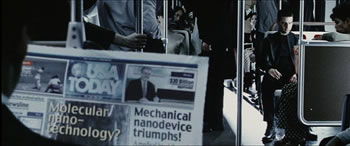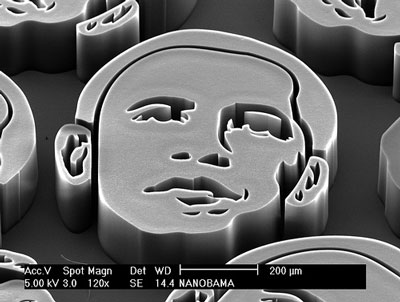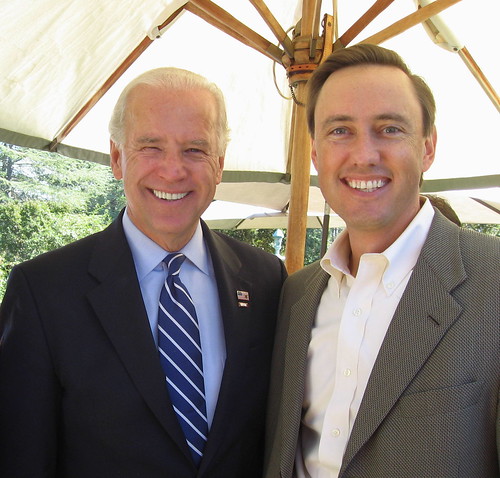And so ends the single worst year in the life of your humble narrator.
But what is that old proverb? "May you live in interesting times."
With that blessing or curse as a criterion, 2008 has fulfilled wishes beyond reckoning. And not only for me, but also for my battered hometown of Detroit.
And it is in times like these that I remember why I enjoy learning and writing about nanotechnology. It leaves the future wide open for imagining. And I choose to imagine a better world. Before nanotech became my obsession beyond reason, I wrote about the Israeli-Palestinian conflict. No more explanation needed there.
I have alluded before to a better, nano-enabled future for my down-and-out Motown hometown, where the seeds of the new auto industry have already been planted.
The next age of the automotive industry has begun, and nanotech will fuel the innovation that will make possible the long-lasting, safe, affordable batteries that will power our automobiles.
And it is in automotive technology where nanotech will at last have its first real chance at making a difference in the creation of cars that are safer, more comfortable and more fuel-efficient.
In 2009, I plan on making this a major focus of my work and you'll see it reflected more on NanoBot and elsewhere.
The first major "elsewhere" will be back where my nano obsession began back in 2001, when I helped launch one of the first nanotech magazines and Websites. Small Times has asked me to return as a contributing editor and blogger. The focus there is broader -- nanotech and microscale technologies such as MEMS and microfluidics. So that will be reflected in my new blog, which will launch after the New Year.
For NanoBot readers only, here's a sneak peak at my first post, which centers on new signs of hope for U.S. battery makers.
If you could just tune your ears above the recent clatter and racket that passed for debate over a bridge loan for the Big Three, you might have been able to just make out the tiny baby cries of a newborn U.S. auto industry.
I live in Detroit, so I heard the slap on that baby's ass, followed by the opening shrieks of a brat already born into a disadvantaged, dysfunctional family.
You see, in the literal power struggle over the next age of the automotive industry -- the electric age -- the U.S. battery industry is arriving late.
Well, we'll see if they let that through. I'll link to it when it's posted. If not, it wouldn't be the first time my blogging has annoyed my employers.
So, look for signs of a better year in 2009 for nanotech and for me, personally. I will have new writing and editing projects to announce as new life is breathed into this old hack.
Longtime NanoBot readers know that this blog has my name on it for a reason. It's not only about nanotechnology, but also about some of my personal struggles in covering it. I have managed to retain and grow readership over the past 5 1/2 years of blogging despite force-feeding some of my own developing philosophies about technology's impact on culture, society and religion.
In 2008, I had some time -- a great deal of time -- to think about it. So my readers will be forced to endure more of it. The subject ties in perfectly with some of the major nanotech news developments this past year, including new studies on negative religious and cultural attitudes toward nanotech.
Almost four years ago, I wrote: "Religion. Superstition. Ideology. Dogma. Scientists can ignore them, mock them, place themselves above them at their own peril."
In 2009, this blog will take on an even more personal tone, since much of it is also my scratchpad for ideas. Many articles I have written over the years have been part of a larger narrative, with overlapping themes.
I will, eventually, gently ease into explaining why I disappeared for five months and what I accomplished during that time. I alluded to it cryptically here, but more will be explained as I am able to publish what went on that changed my life dramatically between May and October 2008.
In a way, it mirrored our times, since there was incredible pain mixed with a spark of hope.
It had nothing to do with nanotech, but it did follow the narrative of my life's work and solidified some fundamental ideas about technology and society that I have been thinking about for many years.
Here is where I begin to sound like I am completely out of my mind. But perhaps that is only because I lack the academic background to couch these ideas in the proper format.
You've read on these pages before some nonsensical rantings about how we are forcing the digitization of an analog world. When I say this, I mean it in both the literal and metaphorical sense. It is where I part ways with those who advocate molecular manufacturing. We cannot turn waves into particles, mold clay into golems, and mistake the metaphor for the object.
We are analog in a digital age, where we pretend reality can be segmented. I have seen victims of, become the victim of, people who live by machine thinking, who believe the law can handle essential human affairs, who believe they are doing right, who lean back with self-satisfaction that a scientific mind has captured an act, a thought, an emotion and found the proper hole in which to bury it.
What is lost in science, in all our attempts to segment, measure, adjudicate, is an essential humanity.
I have no use for scientists who mock the superstitious public. Superstition, religion, even metaphor, are part of our nature as humans. To deny that fact, or place yourself above it, is not even very scientific since it ignores important data about the people for whom technology is being developed.
In science, in all attempts to segment human affairs, all it takes is a little humanity, where our reactions to situations, to technological change, can be found on a spectrum and not segmented into bits. It is within that spectrum that we can solve misunderstandings between science and society.
Humanity dwells between the digits, between shadow and light, between beach and shore, between madness and sanity, where explanations can be found in the indescribable.
May the coming year be a time of peace, healing, success and humanity for us all. Happy New Year.





 It was a study around which the anti-nanotech movement was built, since at the time it was the only one around that looked at the potential health effects of carbon nanotubes. I questioned whether pumping a rat's lungs full of nanotubes until he suffocated to death really proved anything.
It was a study around which the anti-nanotech movement was built, since at the time it was the only one around that looked at the potential health effects of carbon nanotubes. I questioned whether pumping a rat's lungs full of nanotubes until he suffocated to death really proved anything.



















